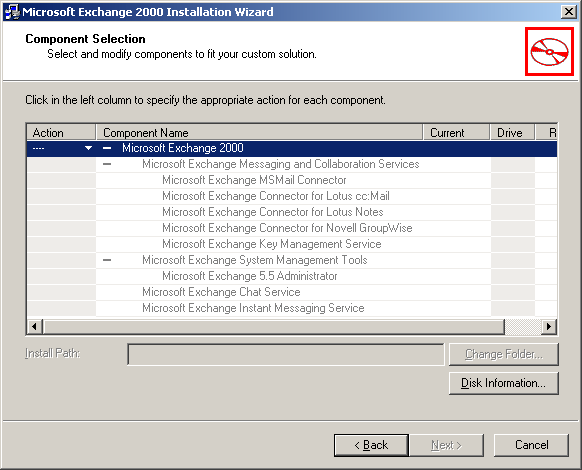Exchange 2000 Server and Exchange 2000 Enterprise Server have to be installed on a machine running Windows 2000 Server or Windows 2000 Advanced Server. If you are going to be using the more robust. Microsoft Windows 2000 Professional + Server + Advanced Server + Datacenter Server SP4 Addeddate 2017-07-17 06:54:10 Identifier. ISO IMAGE download.
Problem:

You need to configure an Exchange server so that messages to external recipients (i.e. recipients outside your organization) are never sent in the RTF format. You want the RTF messages to be automatically converted to HTML instead.
Solution:
HTML is the default format in Outlook and Outlook automatically converts all RTF messages sent outside the organization to this format. In newer Outlook versions (for example, Outlook 2013 and 2016) you can check and change this setting in Options > Mail, section Message format (Fig. 1.).
Fig. 1. The RTF message conversion options in Outlook.
However, to be on the safe side, you can also set your Exchange server not to use the RTF format for messages sent externally. All external messages sent from email clients in the RTF format will be automatically converted to HTML by the Exchange server. See instructions for your version of Exchange Server:
What happens when an RTF message is sent outside your Exchange organization?
If an email message is sent outside the organization in RTF (to be precise, in TNEF - Transport Neutral Encapsulation Format) and opened by the recipient in any version of Microsoft Outlook, the recipient will see the message in its original RTF format.
If the recipient uses any other email client, the message will be displayed in the Plain Text format and a win.dat or winmail.dat attachment containing the original RTF message will be added to that message. Learn more
Why is it better to avoid the RTF format?

Exchange Server Versions
There are many reasons why you should avoid RTF, especially if you add signatures/disclaimers to your emails (signatures are always added in the same format as email messages):
- RTF email signatures are not as customizable as HTML signatures – you cannot add graphics or tables. Learn more
- RTF emails are often converted to plain text on the recipients’ email clients – in such cases, your signature is stripped of any formatting (only plain text remains).
How to set Exchange Server 2013/2016/2019 and Exchange Online not to use the RTF format
To configure Exchange Server 2013/2016/2019 or Exchange Online not to use the RTF format when sending emails to external recipients:
- Open the Exchange Management Shell.
- To list all domains where RTF (TNEF) encoding is used, run the following command (Fig. 2.):
Fig. 2. Checking current TNEF settings. - For each remote domain listed by the cmdlet above, run the following cmdlet to disable sending messages in the RTF (TNEF) format: where DomainName is your actual domain name.
- Restart the Microsoft Exchange Transport service to apply the changes.
Since HTML is the default email format, all RTF messages will be converted to HTML.
Tip

You can also set Exchange Server to enforce the HTML format instead of forbidding the RTF format. Learn more
How to set Exchange Server 2007/2010 not to use the RTF format
To set Exchange Server 2007 & Exchange Server 2010 to convert RTF messages to HTML:
- Run the Exchange Management Console.
- Open Organization Configuration and select Hub Transport.
- Open Remote Domains.
Right-click on Default and select Properties (Fig. 3.):
Fig. 3. Navigating to the Remote Domains tab in Exchange Management Console.- In the window that opens, select:
- In Exchange 2007: the Format of original message sent as attachment to journal report tab
- In Exchange 2010: the Message Format tab (Fig. 4.).
Find the Exchange rich-text format section, select Never use and click Apply (Fig. 4.).
Fig. 4. Configuring Exchange Server 2010 to convert RTF messages to HTML server-side.
Microsoft Exchange Server Download
How to set Exchange Server 2003 not to use the RTF format
Exchange Server 2000 Iso 64-bit
To set Exchange Server 2003 to convert RTF messages to HTML:
Exchange Server 2000 Iso 64
- Run the Exchange System Manager program.
- In the left panel, go to Global Settings > Internet Message Formats > Standard.
- From the context menu, choose Properties and go to the Advanced tab.
- Set the Exchange rich-text format option to Never use (Fig. 5.).
Fig. 5. Preventing Exchange Server 2003 from sending messages in the RTF format.
